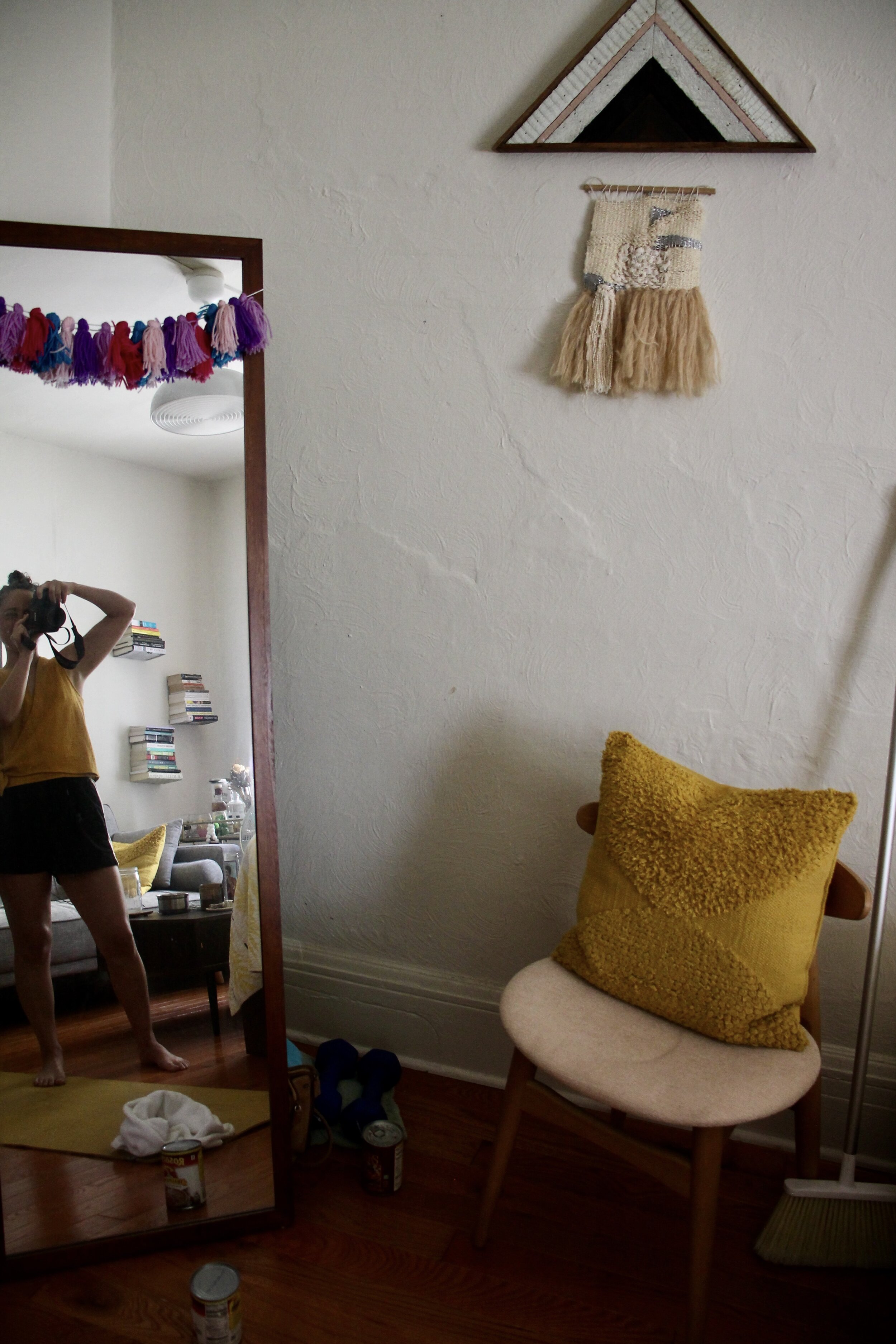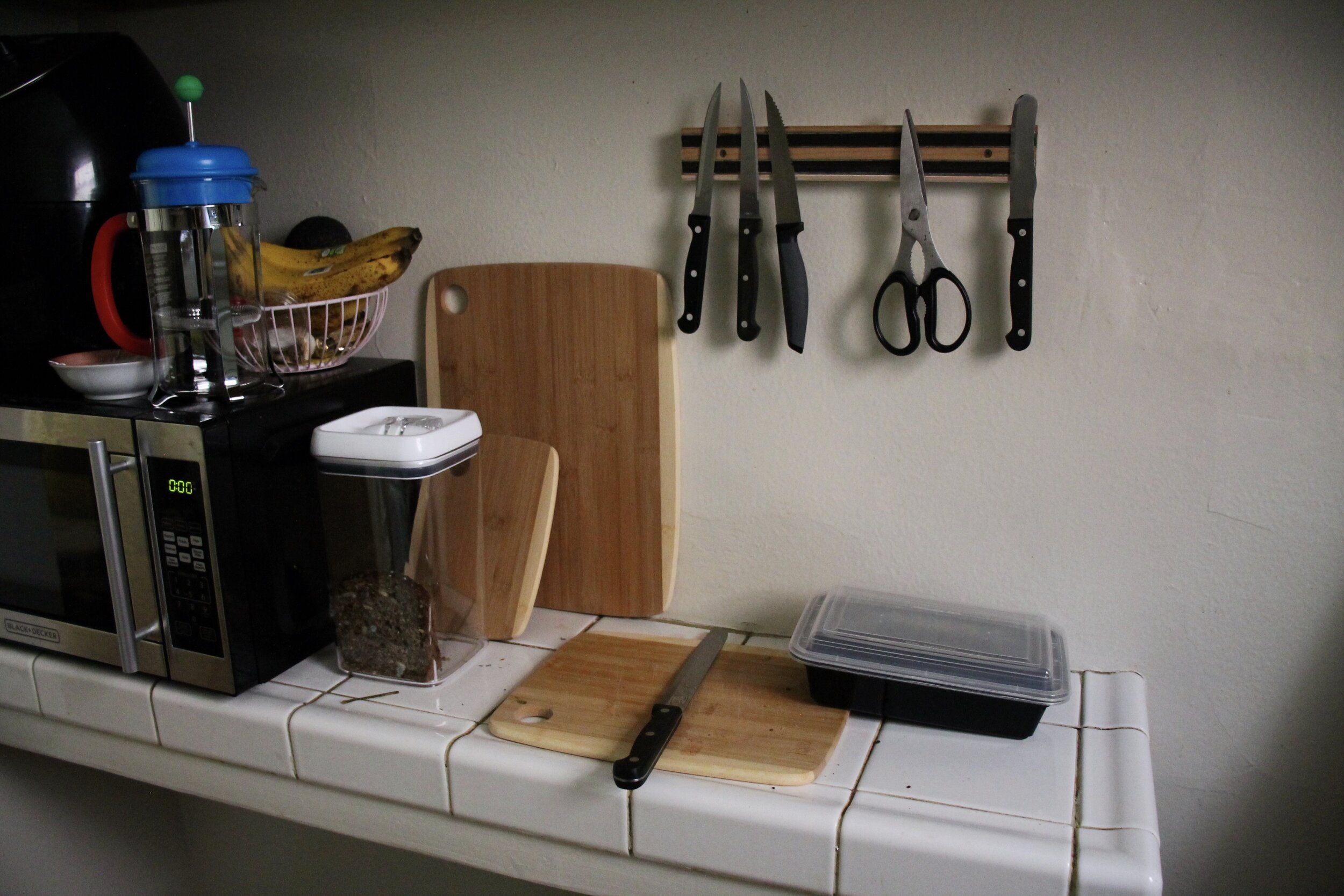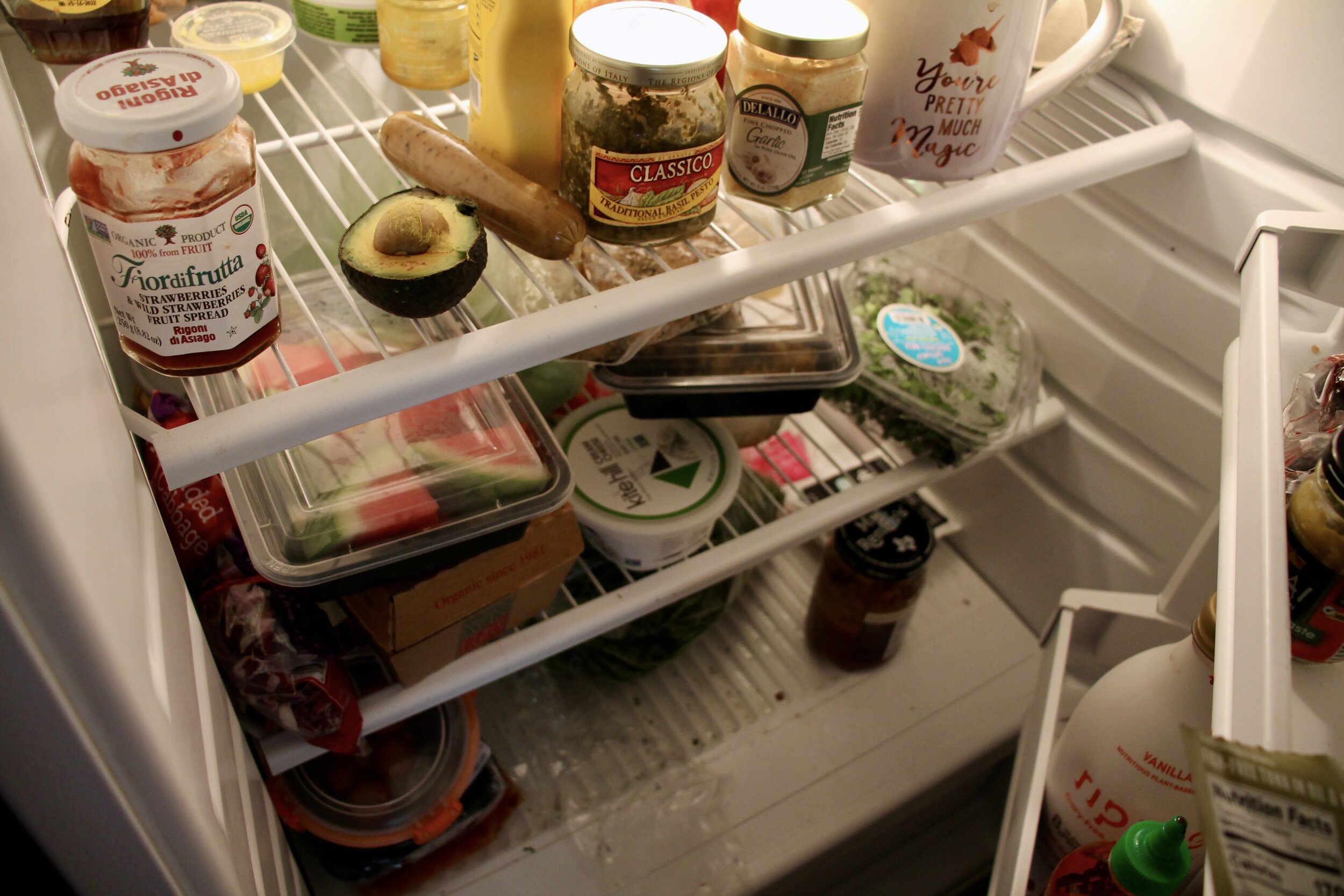5 Tips to Help You Save Money & Live More Sustainably (Ideas from my childhood)
Growing up, I remember hating how frugal my parents were.
While everyone else had the latest three-ring binders or backpack, they were convinced I could reuse the ones I already had from the previous year. Let’s not even talk about how much bargaining went into getting the newest Sumo grip pencil.
I was also strangely embarrassed by the fact that they used old t-shirts as rags while cleaning the house. And, while everyone else had a Swiffer, they were still using old mops and buckets.
When I started making my own money, I began to buy more frivolous things. I bought Frankie B. jeans (a whopping $80 more than the ROSS jeans I’d always worn before). I fell in love with Betsey Johnson and spent loads on fancy high heels. I splurged on takeout. It was indulgent. And I liked it—for a while.
Now, however, I find that I’m drawn to their habits instead of my own.
Not only am I conscious about the money I spend, but I’m now much more aware and educated about the effect of consumerism on the environment.
I’m realizing that my parents may have been making economic choices, they were also making eco-friendly choices.
Because of this, as I live on my own in my own apartment, I’ve decided to adopt some of these practices. Here are my five frugal tips that help you live more sustainably.
What my parents taught me: “Put it in the rag pile”
My dad loves tank tops. Living in Hawaii, these sleeveless shirts are his favorites. He wears the same tank tops for years. He wears them until there are holes in them. Then he keeps wearing them. My mom, similarly, has been wearing the same bathing suits for years. When the elastic starts to break, she ties them back with a rubber band.
When their clothing (and mine as a child) is finally too worn to wear out in public, they put it in the rag pile. The rag pile is a bucket hidden in our laundry room cupboard. These rags are used to dry the floor after it’s been mopped or if something spills on a countertop.
For them, it’s simply about frugality. Why spend money on clothing when you could spend money on ski lift tickets or fixing up the house? Why spend money on paper towels or Swiffer pads when you could spend money on golfing lessons or a new book?
I’m now realizing that this is also a wonderfully sustainable way of life. Not only are you buying less clothing, but you’re also not having to buy as many cleaning supplies. Rather than waste a roll of paper towels or Swiffer pads, you’re simply using what you already have.
Tip #1: Only buy the few items you love. Wear them until you can’t wear them anymore. Then, repurpose them as cleaning tools.
What my parents taught me: “Turn off that light”
One of the most outstanding memories of my childhood is how crazy my dad was about my brother and I turning off the lights. He was constantly reminding us about the electricity bill. If it went up one month, we’d have to have a talk about why we thought it had. If he noticed that we’d left the light on in a room we’d vacated, all hell broke loose.
For him, it was all about saving money. Why should he be paying an extra $X amount when it could have easily been avoided… if we just turned off that light!
I’m now paying my own electricity bills. Though these bills are a lot lower than my monthly internet bill, I’m still aware that a portion of my paycheck goes to them. On top of that, I know that my electricity isn’t coming from solar panels or windmills. It’s using the earth’s resources in a big way. So, it’s important for me to make sure I’m not leaving any unnecessary lights on. That I’m unplugging my chargers when they’re not in use. That I’m using my air conditioning sparingly.
Tip #2: Be conscious of the electricity you use. Remember to turn off lights when they’re not necessary and unplug any unused chargers from your outlets.
What my parents taught me: “What’re we having?” “Leftovers.”
My mom was always cooking enough to have leftovers for the next day. As a kid, I remember always being so disappointed that we were going to be having the same dinner as the night before (unless it was this fun Sloppy Joe meal, which I remember to this day). She also made enough to go into our big freezer. That way, she wouldn’t have to grocery shop on busy weeks and could simply reheat the leftovers that had been frozen a couple of weeks back.
For her, it was all about saving both time and money. Why cook every night when you can make a big enough portion to have leftovers?
I definitely understand this now that I cook for myself. Cooking every day, even if you love it, can feel exhausting. Leftovers are an amazing option. Not only that but cooking this way allows you to use up your ingredients rather than letting them sit in your fridge which often leads to food going bad. Less food waste. Less money. Less time.
Tip #3: Plan out your meals. Look up recipes you want to make ahead of time. Then, buy the right ingredients with enough to make leftovers. Cook up your big meal and make sure to use up all your ingredients. Then store away leftovers in the fridge or freezer to eat later.
What my parents taught me: “Is it broken?”
I remember asking for new things (backpacks, CD players, a watch) and my parents asking me if it was broken. “No,” I would respond. “Then why do you need a new one?” How could twelve-year-old me explain that I needed the latest CD player because it was cool? Why couldn’t they just understand that?
For them, it was all about frugality. Why would they spend money on something that I already owned just because the latest version was now in a metallic purple (the same metallic purple of the spaghetti strap shirt I wanted from Limited Too)?
I am now blown away by the prices of things that kids have. I mean… phones, tablets, Nintendo DSs. I can’t imagine how much parents are paying for these kids to have the most basic entertainment devices. When I think about all that money as well as all of the plastic used to make these things (only to be discarded when the latest model comes out) I feel pretty sick.
Tip #4: Reconsider “need” vs. “want.” Why do you think you need that new pair of shoes? Is it because your other ones are worn out? Have you tried fixing them? Sure, sometimes it’s great to just buy something because you like the style, but when trying to live more frugally and more sustainably, a good step is to ask yourself this question every time you feel like purchasing something.
What my parents taught me: “Your grandma can make it better”
This one really frustrated me as a child. I remember, every Halloween, I was so jealous that my friends got to go to the Disney store and pick out their favorite princess costumes. They looked exactly like they had in the movie.
I was never allowed to shop for costumes. My grandma, an incredible seamstress, sewed me my costumes every year. The trouble was, they were too good. They didn’t look exactly like the princess’ costumes because they looked real. They were real. I remember looking at the other children with their flimsy costume materials and feeling too different.
There I was with these incredible costumes, better than anything Cinderella’s mice could have made, feeling left out because I didn’t look as cookie-cutter as everyone else.
Ridiculous.
That’s all I can say about that now. These beautiful, handcrafted costumes brought to life these stories in a realistic way. My Pocahontas necklace of real stones was so much better than those little plastic things that hung around other kids’ necks. I was incredibly lucky.
Best of all, these costumes weren’t made by a machine. They were sewn in my grandma’s sewing room with just the right amount of fabric. They were made from real materials by a real person.
I now appreciate the fact that they weren’t mass-produced. They were incredibly special.
Tip #5: Go artisanal. Your community is filled with more crafty people than you might think. Find out what your friends can do. Rather than go for a mass-produced item, find something that someone you know has made. If you are looking for something specific and don’t know anyone who can make it, look for local craftsman or Etsy.





This is also a learning process for me as I move away from the ingrained consumerism that I’ve always known and try to live more frugally and more sustainably. I am by no means perfect and am still making frivolous purchases that both my parents and the earth would be ashamed of. But I am making a conscious effort to change. <3



